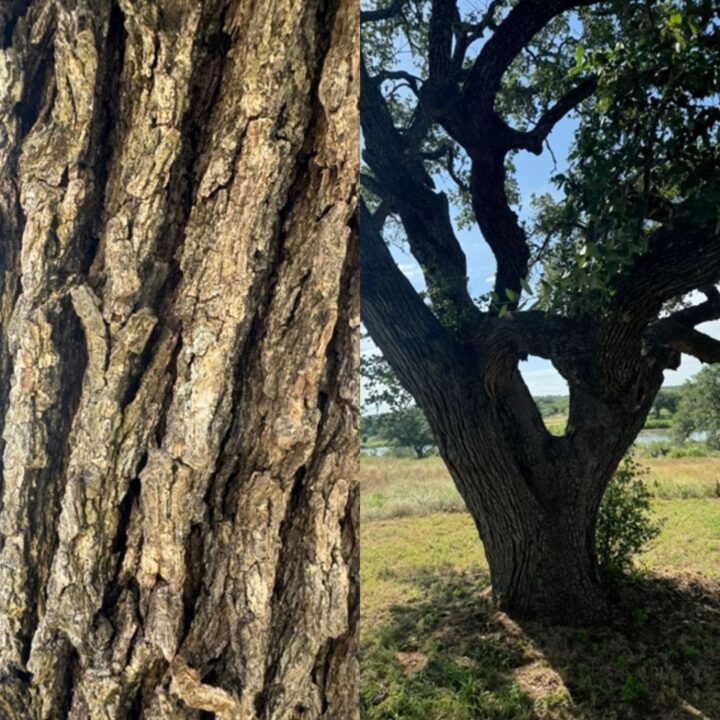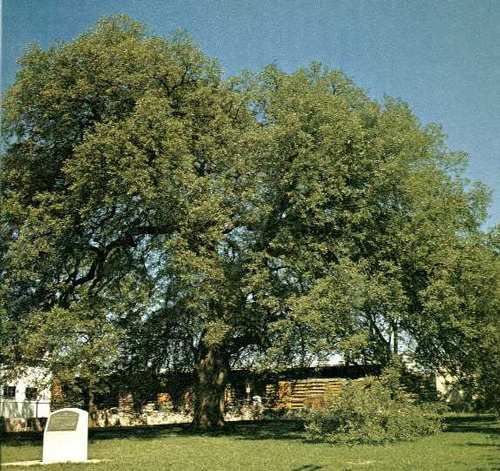Surrounded by massive live oaks – that was my childhood.
My parents moved to Austin in the 1980s. They decided to buy the house before they stepped inside. It was the oaks that made the decision for them.
Century oaks. Gnarled and bent. Big and grumpy. Long and horizontal.
I got to know these trees intimately by climbing in them – how the bark feels, the animal hide outs, damaged limbs. I spent hours in those trees (my mom would banish me from the house).
So here is my attempt to share some of the majesty of these trees – a nod to some trees that helped raise me.
What is a “Live Oak?”
First let’s define our terms. When I write about “Live oaks”, I specifically am writing about Quercus Virginiana and/or Quercus Fusiformus. Two species – very closely related (sometimes even mixed). If you want to read more about the similarities and differences between these two…HERE is a blog post just for you…
General characteristics:
- Evergreen Hardwood Oak
- 40-80 feet tall at maturity
- 60-100 spread at maturity
- Unique curved branches that often “reach down”
- 2–4 inch dark green leaves
- Bark: grayish brown with deep crusty vertical pieces
- Resilient and drought tolerant (once established)
- Small oval acorns (less than an inch)
Here are some pictures of live oaks, their bark and their leaves so you can identify one.

Why should we care about Live oaks?
- They are all over the place in central Texas
- They are the most common oak in the area.
- They are beautiful.
- They are important for wildlife. If you care about landscapes and landscaping in Central Texas…you should care about live oaks.
If you care about landscapes and landscaping in Central Texas…you should care about live oaks.
Why are they so common?
Answer: Resilience
Live oaks are drought resistant and once established can survive through the hottest of summers and the toughest of winters. Additionally, they are pest and disease resistant (with the notable exception of oak wilt – read this if you want to know more about oak wilt and how to avoid it). This is essential for them to display such longevity.
Longevity?
Answer: You bet
These trees live a long time…a really long time.
When you plant one of these trees, you could be making a multi-century impact.
The most famous live oak in the Austin Area is the Treaty Oak which is likely over 500 years old.
That’s twice the age of the United States of America. This tree is near downtown and an easy stop – it’s worth the 5 minutes to stop by and appreciate the beauty and history.

It is common for these trees to live many decades and in some cases centuries. Rarely they will even grow to be 500-1000 years old. See “The Big Tree” in Rockport Texas that is 10 meters in diameter…
Any fun facts about live oaks?
- USS Constitution – “Old Ironsides” was a famously resilient ship in the war of 1812. It was made from live oaks. Live oaks were used extensively in ship construction (before we moved to metal ships).
- The US government recognized the importance of these trees for national interest and John Quincy Adams created the first federal tree farm in 1829 to grow live oaks.
- Catkins: Those annoying brown tassel things that you see in the spring are the flower and that’s how they pollinate.
- Some live oaks live to close to 1000 years old. That is insane.
- A live oak branch is featured on the seal of Texas symbolizing strength and resilience.
- Live oaks grow fast when young and then slower as they age.
- Huge and extensive root systems (thus the resilience)
- Many large oak groves were used as meeting places for the Native Americans (including the treaty oaks in Austin)

